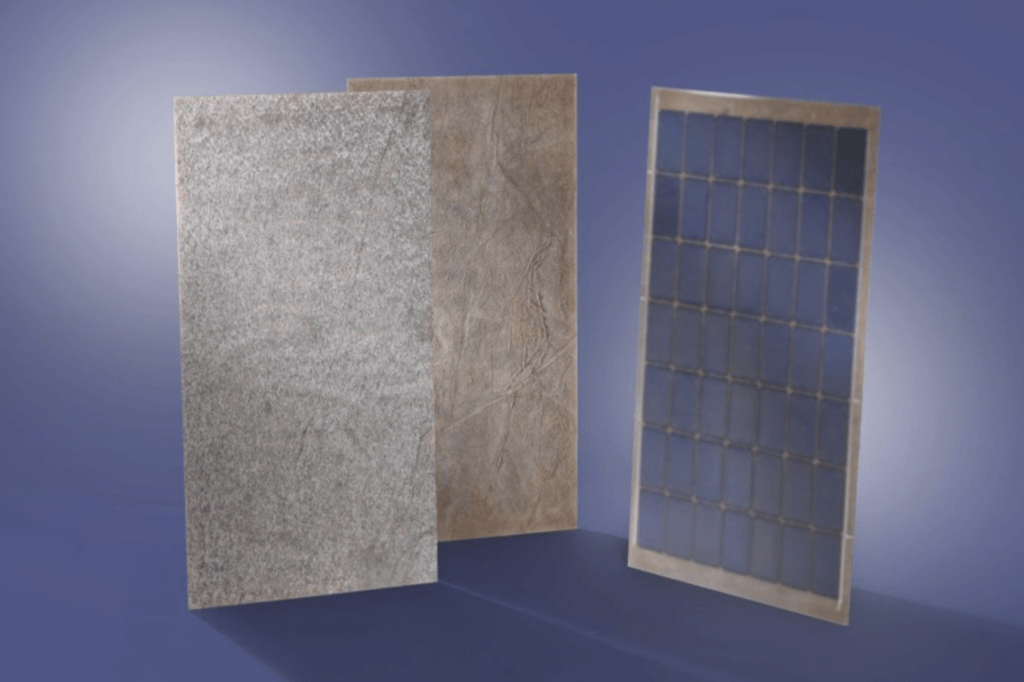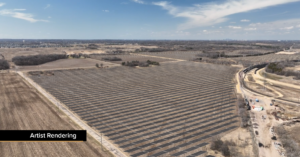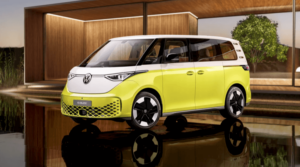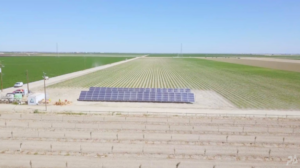Hello friends and supporters of Freeing Energy,
The world of clean energy has never been more exciting and packed with news! Check out the top headlines from August.
Enjoy.
Cheers,
Bill Nussey and the Freeing Energy Team
More news
The million-mile battery is really here. Though believed by some to be a major bottleneck in the adoption of electric vehicles, battery technology has been quietly reaching new heights. Lab tests have shown that advanced battery models created by companies like Tesla and BYD have the potential to achieve the 3 million mile mark. Even when tested in real world scenarios (in extreme cold or heat, for example) these batteries can still easily reach 1 million miles without any severe dip in performance. Durable, quick-charging batteries that can withstand cycle after cycle will play a foundational role in the transition to clean energy, and metrics that once seemed unreachable are rapidly becoming the norm. (The Electric)
Facade BIPV modules designed with stone veneers. It’s becoming common to see the telltale blue of solar panels line the roofs of residential areas and crowd the tops of commercial buildings and parking structures. While people are getting exposed to the look of traditional photovoltaic panels, there is still a push to design panels that integrate more seamlessly with traditional architecture. To this end, Germany’s Institute for Solar Research Hamelin has developed a stone veneerthat allows a photovoltaic cell underneath to capture visible and UV light with reasonable efficiency. (PV Magazine)

New ‘Battery Bonus’ program offers incentive to add storage. In an effort to expedite Hawaii’s shift to 100% clean energy, Hawaiian Electric has created a plan to reward customers for installing batteries as part of a solar+battery system. The state leads the US in solar installations per capita, making it a prime candidate for widespread battery adoption. This program will pay an $850 per-kW incentive to Oahu residents and businesses to install local batteries. For an average sized installation, this could mean $4,250 in up front payments to help defray the overall installation cost(Hawaiian Electric)
Drought conditions help push western U.S. hydroelectric generation below five-year range. Since 2016, hydroelectric generation in the western U.S. has seen a steady year-over-year decline. In the 2016-2017 water year (from October 1 to September 30, offset to account for winter freezing/spring melting) the western states generated 200,000 GWh, ending June with a little over 150,000. This year, generation through June produced roughly 112,000 GWh – a staggering 28% decline in electricity output from the peak and a 17% drop from the five-year average of 135,000. Prolonged drought conditions have fueled the alarming declines, which have caused some plants to shut down entirely and forced a mixture of other sources (including coal and natural gas) to pick up the slack. (EIA/Reuters)
Holy Grail raises $2.7M seed fund to create modular carbon capture devices. It is still unclear what the first mainstream carbon capture technology will look like, or even through what mechanism it will work. Most people picture hulking, energy-intensive plants that capture the carbon shortly after it’s released by coal or natural gas plants, but two-year-old startup Holy Grail has envisioned a different future, one in which small, modular devices suck carbon directly out of the air. The company has attracted a range of investors, with a recent $2.7M seed fund powering them through a lengthy testing and development phase. Several patents are still pending and most of the final details still need to be worked out, but Holy Grail’s outside-the-box thinking represents one of the many approaches needed to solve a problem as multifaceted as carbon capture. For people that want to do more than send their excess rooftop solar back to the grid, this new technology may offer an even bigger opportunity to help the environment. (Tech Crunch)
Microgrids power through Haiti earthquake. A 7.2 magnitude earthquake hit Haiti last month, fracturing its infrastructure and creating conditions that would spell doom for any traditional power grid. Small, decentralized microgrids throughout the country allowed many communities to keep their lights on and made the devastation somewhat manageable. These microgrids, consisting mostly of solar and diesel generators connected to batteries, sprung up in response to poor grid resiliency in the face of the nation’s frequent bouts with natural disasters. The microgrid model proved its worth in the wake of last month’s earthquake, which will hopefully expedite adoption across the region. (Microgrid Knowledge)
Illinois HOA sues residents over solar system. An Illinois neighborhood has found itself in a legal battle that reflects the shifting public opinion towards residential solar. The neighborhood’s HOA brought a case against a resident for breaching a bylaw that states any solar panels must be installed on the back of the house facing away from the street, and while a 2011 Illinois law specified that HOAs cannot make rules that interfere with the operation of a solar system, the legislation’s vagueness allowed the neighborhood to continue enforcing its policy. Recently, however, a new state law was passed that restricted communities from enforcing rules that could result in a 10% loss in performance of a solar system, invalidating the HOAs previous guidelines. (PV Magazine)
Our latest podcasts
Subscribe to follow us on popular podcast platforms:
Podcast #064 – Jorge Elizondo: How computer science is radically simplifying the design and operation of microgrids.
In this episode, host Bill Nussey catches up with Heila Technologies Co-Founder and CTO, Jorge Elizondo. Learn how Helia’s breakthrough technology is changing the way complex local energy systems are managed and operated, making each component smarter while making the whole system far more efficient and resilient.
Podcast #065 – Michael Liebreich, Part 1: Is it time to go big or go home? Which renewable energy solutions should we pay attention to?
In this first of a two part interview, host Bill Nussey talks with the founder, chairman and CEO of Liebreich Associates and founder of Bloomberg New Energy Finance, Michael Liebreich. This world-renowned thinker, investor, philanthropist and much sought after advisor, weighs in on the renewable energy solutions we should all pay attention to and why.








